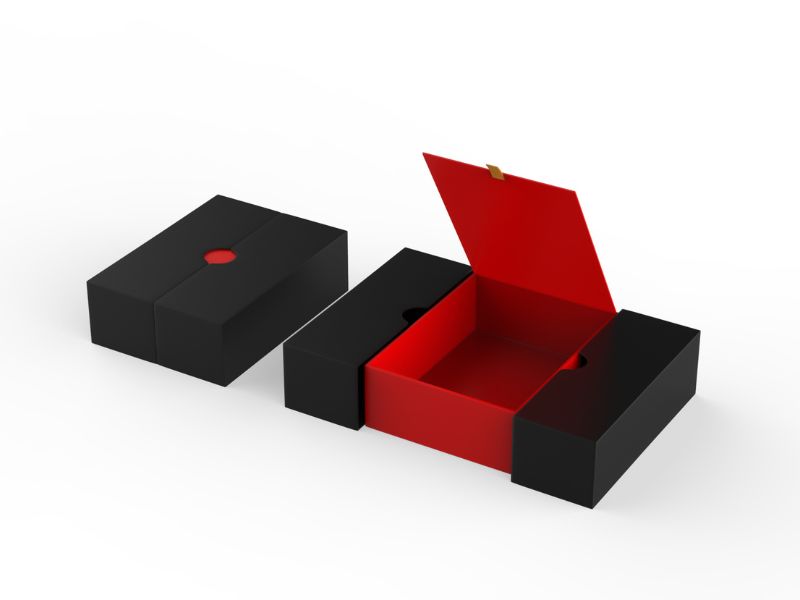Rigid boxes and cardboard boxes are commonly used in many different industries. What are the differences between them and where can they be used?
What are the differences between rigid boxes and cardboard boxes?
Between rigid boxes and cardboard boxes there are similarities, but also many differences.
Characteristics of the cardboard boxes
The cardboard boxes are produced by folding, cutting, and shaping the sheets of heavy-duty paper that is more than 0,25 mm thick. The paper is layered – it consists of tiers of pulp that has been treated, shaped, and pressed. The cardboard boxes come in many different shapes, sizes, configurations, and forms. They are lightweight with firm sides that can cushion impacts and are designed to serve as a protection for various types of materials and products.
Characteristics of the rigid boxes
The rigid boxes are made with high quality solid cardboard, which ensures their durability. The raw materials used in their production possess FSC certificates. The rigid boxes are also covered with designs applied with the utilization of the best printing technology, which guarantees the strength and resilience of the print. They are available in various shapes and sizes. They can also differ based on the type. The types of the rigid boxes available in the catalog of MILO Group are:
- boxes with lid,
- magnetic boxes,
- drawer boxes,
- neck boxes,
- clamshell boxes,
- slipcase boxes,
- suitcase boxes,
- window boxes.

A considerable attention to detail was put in the production process of each type of the rigid boxes. In case of the drawer rigid boxes, the cardboard grooving method was implemented. It makes the packaging more elegant and suitable for high-end customers. The rigid boxes can be customized in order to perfectly align with the product and the brand. They can be decorated with hot stamping, point UV varnish, and different kinds of foils – soft touch, anti-scratch, matt and glossy – as well as decorative pull-out ribbons and foam and cardboard inserts. The clients can also choose material, lamination, and special finish of the packaging.
When to use each type of box?
Due to their characteristics, each type of box has different advantages and applications.
When to use cardboard boxes?
The cardboard boxes are used to pack various types of goods that need to be stored and transported. Because of their sturdiness and adaptability, they are perfect for such items, as:
- technical equipment that requires protection from vibrations and impact,
- baked goods vulnerable to physical damage,
- beer bottles,
- tissue boxes,
and many more.
When to use rigid boxes?
The rigid boxes ensure the product stays intact. They insulate, preserve, and protect the items from exterior damages, as well as the changes of the temperature and high humidity. Moreover, they have the ability to elevate the product and make it appear luxurious, hence more attractive to the buyer. Because of this, they are used in many different industries, from food to cosmetics. The magnetic rigid boxes are ideal for such items, as perfume, pralines, alcohol bottles, and CBD. The drawer boxes can be used for jewelry and make-up, while slip case boxes are perfect for books, magazines, journals, vinyl discs and CDs. When choosing a gift packaging, rigid boxes prove to be superior to other containers.
As it can be seen, cardboard boxes are used mostly for storing and transporting different types of goods. The rigid boxes, on the other hand, serve as a decorative packaging whose purpose is not only to protect the product, but also to elevate it in the eyes of the customers.
